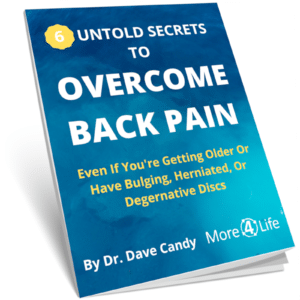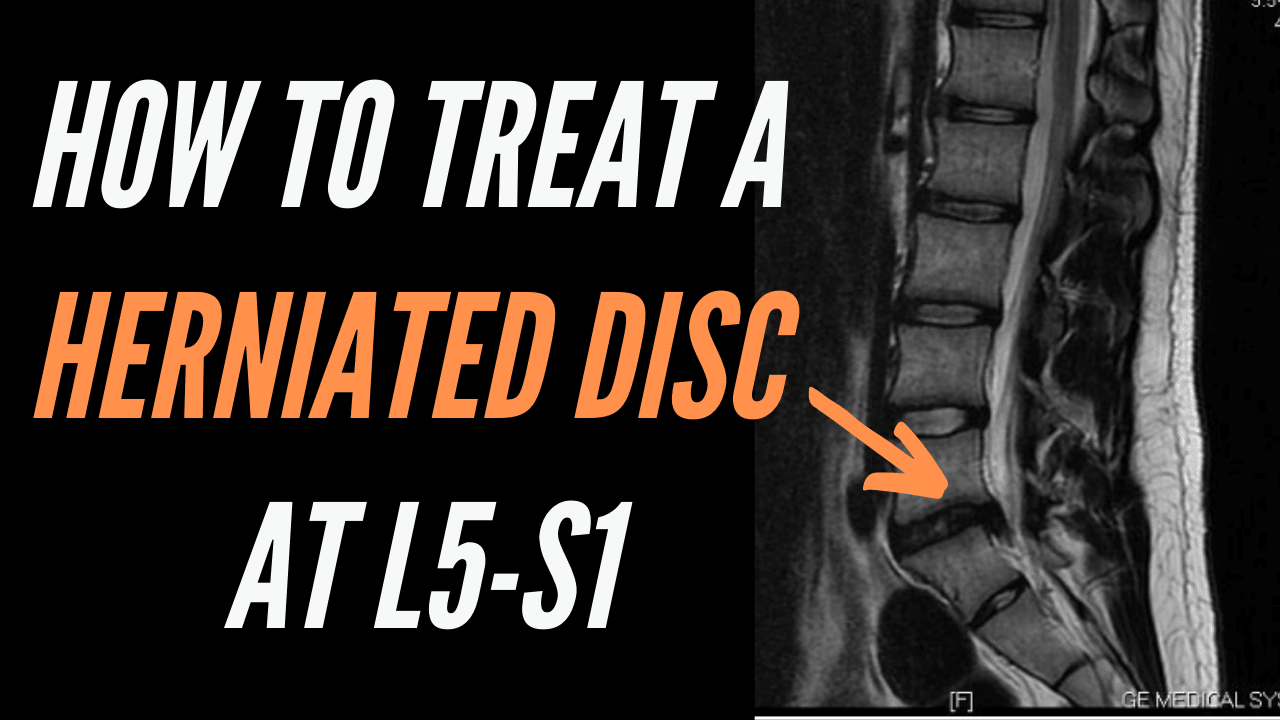Want To Learn How A Herniated Disc At L5-S1 Is Treated?
The first questions you need to ask are "What does your hearniated disc feel like?"
and
"What does the pain stop you from doing?"
Watch the video to learn how a herniated disc at L5-S1 is treated
What Does A Herniated Disc At L5-S1 Feel Like?
Symptoms of a Herniated Disc At L5-S1 are:
-
Back pain or buttock pain
-
Pain in the outside of the hip
-
Numbness / Tingling in the outside of the leg or top of the foot
-
Back or sciatica when sitting for long periods
-
Back pain when standing
-
Back pain or sciatica when walking
-
Tossing and turning in bed to find a comfortable position to sleep at night
-
Difficulty traveling or driving in the car
Those are just some of the most common symptoms of a herniated discs at L5-S1.
Can You Relate To Any Of The Symptoms Above?
Click the button below to download our FREE Back Pain Guide...

How Is A Herniated Disc At L5-S1 Treated?
As you can see from the list above, there are a variety of different symptoms of herniated discs at L5-S1.
And depending on how your herniated disc feels and what the pain stops you from doing the treatment will be different.
Many of the commonly suggested "One-Size-Fits All" treatments for herniated discs include:
- Don't bend
- Don't lift
- Don't run
- Do backward bending (McKenzie) exercises
- Stand up tall
- Sit with good posture
- Get injections
- You NEED surgery
But these treatments aren't necessarily right for every person with a herniated disc at L5-S1.
For example, for someone who has pain when sitting for long periods, standing up tall and walking may be good suggestions.
Conversely, for someone who has more back pain when standing and walking, slouching when sitting and bending from your waist (GASP!), may be good.
Why Are Herniated Discs At L5-S1 So Common?
Because the L5-S1 disc is the lowest disc in your spine
If you imagine your spine like a tower of blocks stacked on top of each other, which blocks have the most pressure on them?
The ones at the bottom of course.
Combine that with the fact that the curve of the spine changes shape from concave to convex at L5-S1 making a sharp hinge point in the spine, especially if the upper lumbar spine is straight as above.
It's no wonder why herniated discs at L5-S1 and L4-L5 are the most common.
In fact, the shape of the spine may actually be better evolved to function in a slightly bent over position as shown in this tongue-in-cheek, but somewhat true, illustration by Esther Dyson. (Remember, evolution happens as living organisms adapt to the demands of their environment.)
Herniated discs at L5-S1 and L4-L5 are so common in fact that even many people with no back pain at all have herniated discs on their MRI!
That begs the question:
Is The Herniated Disc In Your Lower Back Actually The Cause Of Your Back Pain?
Need Help To Find The Cause Of YOUR Lower Back Pain?
Click the button below to request a Free Consultation (in person, by phone, or virtually)
So How Is A Herniated Disc At L5-S1 Treated?
You might think that if a disc is herniated, you need surgery to repair it.
In fact, that's not the case.
First of all, if you're ONLY having back pain and no radiation of symptom into your legs, no loss of control over your bowels or bladder, or no weakness in your legs ( to the extent that you're falling for no reason or tripping over your own toes), you probably shouldn't even consider surgery for a herniated disc.
Learn more about that by reading our post "Can Herniated Discs Heal By Themselves Without Surgery?"
So What Are Some Treatments For A Herniated Disc At L5-S1?
Some common treatments include:
-
Posture modification (Hint: there's no one universal "good posture" that's best for everyone)
-
Hands-on treatment (i.e. spinal manipulation, soft-tissue / muscle release, or dry needling) for quick relief
-
Proper nutrition
-
Proper sleep
-
Stress management
-
Learning what triggers your symptoms so that the pain doesn't return in the future.
Focus On Your Future, Not Your Pain
Rather than focusing on your pain, it helps to focus on your future and what you'd like your life to look like after the pain has gone away.
What do you want YOUR life to look like after your herniated disc has been treated?
Do you want to get back to exercising?
Playing with kids or grandkids?
Sitting at a desk while working on a computer without your back bother you?
Being able to travel in the car without having to stop every hour.
Maybe you just want to be able to do everyday activities such as:
-
Clean your house or make the bed
-
Stand in the kitchen while cooking or washing dishes without having to sit down
-
Be able to the grocery store without having to lean on a grocery cart (or worse, having to use one of those riding carts)
-
Sleep comfortably at night without tossing and turning.
Once you know your goal, you can start to take the steps to get there.
It's common to think, I need to wait until my back heals before I get back to ______.
But what if getting back to ______ was part of the solution to help your back pain heal?
Discover How We Can Help You Get Back The Active, Mobile, & Healthy Life You Want
Click the button below to request a FREE Discovery Visit with out back pain specialist
Outside the St. Louis Area?
Check out Dr. Candy's Online Course "Relieve Sciatic Nerve Pain At Home"
Like this post? Learn more by reading our other posts about herniated discs and back pain such as:
How we help people relieve degenerative, bulging, and herniated discs at L4-L5 and L5-S1.




